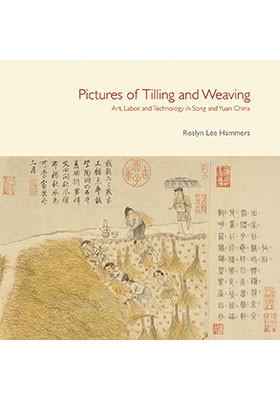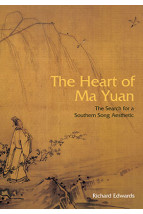Pictures of Tilling and Weaving
Art, Labor, and Technology in Song and Yuan China
(耕織圖:中國宋元時代的藝術、勞動與技術)
ISBN : 978-988-8028-63-4
September 2011
304 pages, 10″ x 10″, 120 color illus.
- HK$350.00
Also Available on
Around 1145 the Southern Song dynasty official Lou Shu inaugurated a genre known as pictures of tilling and weaving through the creation of a pair of paintings that depicted farming families cultivating grain and weaving silk cloth. Each pain ting scroll was devoted to illustrating one of forty-five discrete procedures employed in these processes, and each step was accompanied by a poem. The Pictures of Tilling and Weaving document scientific techniques of agrarian labor and provide commentary on Southern Song society and politics.
The original Pictures as designed by Lou Shu are lost, but this book through consideration of extant Southern Song and Yuan paintings offers a reconstruction of the earliest imagery. In reclaiming the original format of the Pictures, Roslyn Lee Hammers situates the paintings as works of art that engage with Song dynasty artistic practices as well as document the state of Song technology. She argues that these works participated in debates on earlier Northern Song reforms and these movements’ validity for Southern Song society. Central to this argument is an analysis of the poems to the procedures of the Pictures of Tilling and Weaving. These poems, which have received little attention in previous scholarship on the Pictures, are translated in their entirety for the first time in a non-Asian language and are systematically analyzed to demonstrate the larger philosophical and political messages of the entire Pictures of Tilling and Weaving project. After establishing the initial import of the Pictures as conceived by Lou Shu, the book considers the appeal of the genre throughout the Song and Yuan dynasties, when the pain tings and poems were reconfigured by emperors, scholar-officials, and other elite members of society, deployed to comment on the legitimacy of conflicting political ideologies and on historical circumstances.
“Depictions of tilling and weaving were an important means for sponsors, particularly rulers, to demonstrate their interest in the welfare of the people. To my knowledge, there has never been a serious study of the origins of this tradition and the political implications of these images and accompanying texts. In this fascinating study, Hammers does a worthy and extremely valuable job of elucidating the beginnings of the visual and textual traditions.” —Maxwell K. Hearn, Douglas Dillon Curator in Charge, Department of Asian Art, The Metropolitan Museum of Art
“Concern for the common man is manifest in this theme that embraces both painting and poetry, technology and human relationships. To the codification that ensured success in agriculture and silk weaving, Roslyn Hammers delivers a resourceful and intelligent analysis.” —Alfreda Murck, author of Poetry and Painting in Song China: The Subtle Art of Dissent
“Professor Hammers combines a rigorous history of art and science in early modern China with keen social analysis, uncovering document after document that paintings and poems of rural production were situated at the heart of a major controversy over the nature of government and its relationship to the people.” —Martin J. Powers, Sally Michelson Davidson Professor of Chinese Arts and Cultures, University of Michigan



